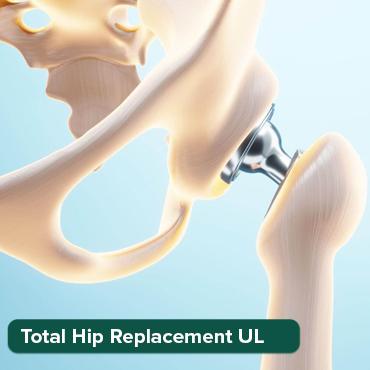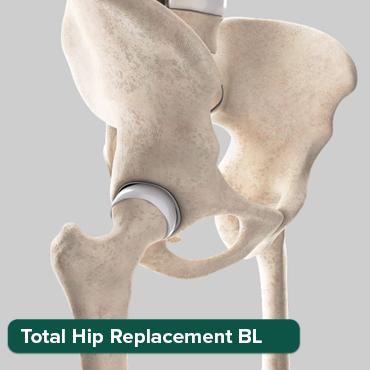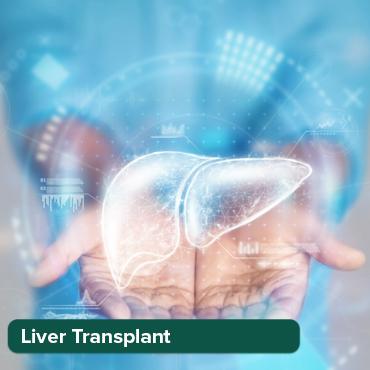
Healthtrip: Comprehensive Pain Treatment Options & Expert Care
22 Jan, 2025
 Healthtrip
Healthtrip- Introduction to Pharmacology and Healthtrip: Pharmacology, the study of drug actions on living organisms, is central to healthcare. At Healthtrip, a deep understanding of pharmacology underpins the selection and administration of medications for pain management, ensuring effective and safe care. This foundational knowledge guides clinicians in choosing the right drug, in the correct dosage, and for the appropriate interval to maximize benefit while minimizing adverse events. The goal is to improve patient outcomes, reduce suffering, and optimize recovery through evidence-based pharmacological interventions.
- Pharmacokinetics and Pain Management: Pharmacokinetics describes how the body processes drugs, and understanding this process is vital for effective pain control. When considering pain medications at Healthtrip, several parameters are carefully evaluated:
- Absorption: How a drug enters the bloodstream is of utmost importance. Oral medications, commonly prescribed for pain, are absorbed through the gastrointestinal tract, with the rate and extent of absorption variable. Intravenous drugs, or those delivered via topical or transdermal approaches, have their own particular routes and rates of absorption.
- Distribution: The pattern of distribution affects the quantity of drug at particular sites of action, such as the opioid receptors in the brain and spinal cord for opioid medications. Drug distribution is influenced by factors such as blood flow, tissue affinity for the medication, and binding of the drug to proteins in the plasma.
- Metabolism: Once in the body, most medications are metabolized by enzymes (e.g., those of the cytochrome P450 system) primarily in the liver, but other organs may also be involved. Active metabolites may be formed, and genetic variations in enzymes may result in variation in the metabolism of drugs among individuals. Awareness of these differences is extremely important in avoiding drug toxicity or therapeutic failure.
- Excretion: The kidneys play a major role in drug clearance by excreting drugs directly into the urine or processing metabolites. Hepatic bile and feces are other excretory routes. Patients with reduced renal or hepatic function require careful dose adjustment to avoid drug accumulation and toxicity.
- Opioid Analgesics: Pharmacology and Use in Pain Treatment: Opioid analgesics remain the most potent pain relievers. These drugs act on the central nervous system through several mechanisms, predominantly by binding to specific opioid receptors (mu, kappa, and delta). These receptors control sensory pathways from the periphery and from higher centers to reduce the sensation and emotional perception of pain. Opioids are used at Healthtrip to treat moderate to severe pain and usually are given with nonopioid analgesics to provide additive effects, increase their analgesic effiacy, and lower dose-related adverse events of each.
- Common opioid analgesics: Morphine, fentanyl, hydromorphone, and oxycodone are among the most frequently chosen medications for pain management, although other opioids such as codeine, methadone, and levorphanol have their own specific niche indications. Each of these has variable drug response curves.
- Side effects and safety: Opioid analgesics also have undesirable side effects such as nausea, vomiting, constipation, pruritus, sedation, and respiratory depression, and caution with combinations of opioids with other sedatives is required. Tolerance and dependence may develop with chronic use, and patients may require progressively higher doses to achieve the same level of pain relief. Opioid-induced hyperalgesia, a paradoxical situation in which pain worsens after chronic opioid use, also can occur and must be differentiated from underlying untreated pain. The use of naloxone, an effective opioid antagonist, can prevent and reverse opioid-induced respiratory depression and central depression but might also reverse analgesia.
- Patient-controlled analgesia (PCA): PCA devices are used widely at Healthtrip and allow patients to self-administer preprogrammed doses of opioid analgesics, giving the patient some measure of self-control over their pain relief.
- Spinal opids: Spinal epidural and intrathecal infusions of opiods are commonly employed to treat severe, intractable pain or pain following surgical procedures. Direct delivery to the spinal cord enables lower systemic doses and, consequently, fewer systemic side effects.
- Nonsteroidal Anti-inflammatory Drugs (NSAIDs) and Analgesia: NSAIDs are another major class of drugs used to treat pain. They act by inhibiting enzymes, cyclooxygenase (COX) -1 and COX-2, that convert arachidonic acid to prostaglandin and other lipids within the inflammatory cascade. Prostaglandins sensitize neurons to pain and also contribute to inflammation and fever. NSAIDs have strong anti-inflammatory, anti-pyretic, and analgesic effects. They are used extensively for mild to moderate pain at Healthtrip, especially for pain of musculoskeletal origin.
- Mechanism of action: COX-1 is thought to be expressed constitutively, mediating physiologic functions in the stomach, kidney, and platelets, whereas COX-2 is induced in response to inflammation. Aspirin and most nonselective NSAIDs inhibit both COX-1 and COX-2. Selective COX-2 inhibitors such as celecoxib have been approved for use in patients who are vulnerable to gastrointestinal complications, because they exhibit fewer such side effects than the older nonselective NSAIDs.
- Common NSAIDs: Ibuprofen, naproxen, diclofenac, and indomethacin are among the most commonly administered NSAIDs, and they are available in both oral and parenteral forms. Aspirin is often taken for its antithrombotic action or as an analgesic. A large number of over-the-counter NSAIDs are available and widely used.
- Side effects and safety: Despite their effectiveness, NSAIDs have major side effects such as gastric irritation from cyclooxygenase inhibition as well as bleeding from drug-related platelet inhibition, kidney damage (nephrotoxicity), and edema formation. Selective COX-2 inhibitors were developed to reduce gastric irritation. However, both selective and nonselective NSAIDs have been linked to an increased risk of cardiovascular events. Therefore, physicians must weigh both risks and benefits before prescribing NSAIDs. When needed for long term pain control, concomitant use of an acid suppressing agent to minimize risk for peptic ulcer development and lower dose, or pulse like dosing regimens in patients with underlying risk factors such as renal insufficiency or heart conditions, are often used to manage the risks.
- Antidepressants as Adjuvant Analgesics: Antidepressant medications, particularly tricyclic antidepressants (TCAs) such as amitriptyline and nortriptyline, are common and accepted adjuncts in the management of chronic pain conditions. They have also gained favor for the treatment of selected neuropathic pain syndromes. They block reuptake transporters of serotonin and norepinephrine in the brain, and are implicated in the descending pathways that modulate the sensation and interpretation of pain in the brain and spinal cord. Antidepressants are used at Healthtrip to relieve chronic pain, especially in conjunction with opioid analgesics.
- Mechanism of action: The antalgic effect is typically seen at lower doses than those used to treat depression. Their effects in pain relief appear distinct from their effects in depression. The analgesic benefits of antidepressants are seen even in patients who lack clear-cut signs of underlying depression.
- Common antidepressants used for analgesia: Serotonin norepinephrine reuptake inhibitors (SNRIs), duloxetine and venlafaxine, are also a useful adjunct for long term pain management. Anticonvulsants, such as gabapentin and pregabalin, are used to treat neuropathic pain. The mechanism underlying their action for this indication is poorly understood, but it is likely related to the inhibition of calcium influx into overactive nerve endings.
- Side effects and safety: Antidepressants can have numerous side effects, such as drowsiness, dry mouth, constipation, orthostatic hypotension, and alterations in cognitive function. Selective serotonin reuptake inhibitors (SSRIs), while useful for the treatment of depression, are less effective for analgesia and have fewer side effects than TCAs. SNRIs are more selective but also have adrenergic side effects. Anticonvulsants also produce CNS side effects, such as sedation, and often require several weeks of treatment before they are effective.
- Adjunctive Pharmacology and Non-Pharmacologic Approaches: Complementary and alternative therapies for pain management are often used at Healthtrip, including non-pharmacolog- ical therapies such as yoga, meditation, guided imagery, progressive muscle relaxation, heat and cold therapy, massage, physical therapy, and acupuncture. Adjuvant pharmacological agents, used in conjunction with other classes of pain medications such as acetaminophen or NSAIDs, also include skeletal muscle relaxants (baclofen) and specific antiemetics (ondansetron, aprepitant).
- Skeletal muscle relaxants: Skeletal muscle relaxants such as baclofen, tizanidine, and cyclobenzaprine are commonly prescribed as adjuncts to other pain medications. Tizanidine and baclofen are thought to act within the central nervous system, whereas cyclobenzaprine may act both centrally and peripherally. Skeletal muscle relaxants frequently have sedating effects that may limit their use.
- Anetiemetics: Patients suffering pain from various causes also experience nausea and vomiting. Anti¬ emetics such as ondansetron, a 5-HT 3 receptor antagonist, and aprepitant, an NK 1 receptor antagonist, are indicated in the treatment of emesis secondary to chemotherapy but can also be effective adjuncts in patients whose pain and/or other drugs such as opiates also induce nausea and vomiting. Dimenhydrinate, an antihistaminic agent, is useful for treatment of motion sickness.
- Nerve blocks and other interventions: Other interventions such as nerve blocks, facet injections, radiofrequency ablation, and spinal cord stimulation frequently are used for management of certain pain syndromes. Such modalities may provide sustained pain relief with minimal long-term sequelae. These interventions are usually undertaken in hospital settings by a specialist with training and expertise.
- Future Directions in Pain Management: Ongoing research is focused on development of more selective and, therefore, less toxic pain medications. New opioid agents that are more selective for one mu opioid receptor subtype, or those that act primarily through the kappa opioid receptor, are on the horizon. Development of pain medications targeting inflammatory cells or cytokines is also being explored. There is growing interest in understanding the molecular basis underlying chronic pain syndromes. Investigation of the genetic basis for pain perception, the molecular composition of sensory neurons, and the neural mechanisms for processing the sensation of pain should improve our capacity to develop medications targeted to the specific molecular pathways that produce pain. Development of novel routes of drug administration offers another therapeutic opportunity to control pain, and the use of topical agents or slow-release formulations of previously approved agents may reduce systemic side effects.
- Conclusion
Introduction to Pharmacology and Healthtrip
Pharmacology, it sounds like something out of a science fiction movie, doesn’t it? But really, it's the study of how medicines affect the body, and it's absolutely vital to healthcare. At Healthtrip, we understand that getting the right medication to a patient is something that cannot be left to chance; a deep understanding of pharmacology is the bedrock of our approach to pain management. It allows us to carefully select and administer medications to alleviate suffering while ensuring safe and effective care, ensuring that every step we take promotes positive outcomes for our patients. Think of it like this; we are trying to guide your body through complex, and sometimes painful, healing processes. We need to choose the right drug from many options, just like a chef selects the right spice for the best flavor, and like a symphony conductor selects the right instrument to achieve a perfect blend. But that's not all; we need to have the correct dosage, just like a precise amount of salt in a cake or a perfect tempo in music. And we also make sure that such medicines are given at correct intervals, to achieve a balance between effectiveness and minimal side effects. This foundational knowledge is, simply put, the science of achieving results, and it enables our clinicians to select, dose, and time medications to achieve maximal benefit while reducing adverse events, thereby optimizing the patient’s recovery and well-being through science-based pharmacological intervention. We also understand that for many of you who come seeking help at Healthtrip, there is a great deal of apprehension, especially following experiences with medical systems that have often been less than ideal. You come to us in search of not only treatment but relief from suffering. And we approach this task with the full weight of responsibility that befits our position. Because we know that behind this science is you. Individual people in pain. That's why everything we do is intended to empower you with the best care, so that you can return to living a life free of pain.
Most popular procedures in India
Pharmacokinetics and Pain Management
Pharmacokinetics is the study of how the body processes drugs, and it’s absolutely vital in making sure your pain is managed effectively. It reveals how drugs interact with your body, like a road map that determines how medicines get to where they need to go, and what happens once they're there. Think of this process like a journey a medication takes in your body, from where it first enters, to where it goes, how it gets broken down, and finally how it leaves. Every step of the way, Healthtrip has to understand this journey in order to ensure that the medicines that alleviate pain are going to perform their role as designed. At Healthtrip, we carefully assess four key parts in this journey of pain medications: absorption, distribution, metabolism, and excretion. Absorption is about how a drug enters the bloodstream, which has a big influence on how quickly it starts to work. Oral medications, which are commonly used for pain relief, pass through the gastrointestinal tract, and the rate and extent of absorption may have subtle variations. Drugs delivered through an intravenous line, or those that are rubbed into the skin (topical) or placed on the skin (transdermal), all have their own distinct routes and rates of absorption. Once a medication is absorbed, it's transported throughout the body. The pattern of distribution affects the quantity of drug in the specified site of action (e.g., the opioid receptors in the brain and spinal cord in the case of an opioid medication), and drug distribution is influenced by factors such as blood flow, tissue affinity for the medication, and the extent to which the drug is bound to proteins in the plasma. Once in the body, most medications are metabolized by enzymes, mainly in the liver, although other organs may also have a role. Some of the resulting metabolites may be active, and genetic variations in enzymes may influence drug metabolism from one individual to another. These differences are critically important in avoiding toxic reactions and therapeutic failures. Awareness of these differences is absolutely essential in choosing and dosing such medications. The body must ultimately eliminate medications. This process, termed excretion, is primarily from the kidneys, and, to a lesser degree through the liver, bile, and feces. Patients with reduced kidney or liver function require adjustments in medication doses. By understanding these processes thoroughly, Healthtrip clinicians optimize drug selection, doses, and intervals to promote customized pain management strategies that achieve maximum pain relief with minimal side effects. Our goal at Healthtrip is to provide the best possible care, which includes choosing the right drug, in the right amount, at the right time, for every individual patient.
Wellness Treatments
Give yourself the time to relax
Lowest Prices Guaranteed!

Lowest Prices Guaranteed!
Opioid Analgesics: Pharmacology and Use in Pain Treatment
Opioid analgesics are powerful medicines that remain the most potent agents for alleviating pain. We recognize the crucial role that these medications play, and we adhere to that responsibility with the goal of ensuring that they are administered to maximize their benefits while minimizing the risk of side effects. Opioids act primarily within the central nervous system by binding onto specific receptors (mu, kappa, and delta opioid receptors), which serve as control centers for pain and emotion. These receptors are located throughout the brain and spinal cord and control sensory pathways from the periphery and from higher brain centers to reduce the sensation of pain. Opioids are used at Healthtrip to treat moderate to severe pain and are frequently given along with nonopioid analgesics to achieve additive effects, increase their efficacy, and reduce dose-related adverse events of each drug. Some of the most common opioid medications that we use for pain management include morphine, fentanyl, hydromorphone, and oxycodone. These medications are each unique and have variable response curves. We also carefully consider the use of other opioids—codeine, methadone, and levorphanol—that have specific indications, depending on the underlying conditions producing pain and other patient-related factors such as age, kidney function, liver function, and other disease states. We know that patients benefit from these medications, but these medications also have undesirable side effects such as nausea, vomiting, constipation, pruritus, sedation, and respiratory depression; particularly dangerous is the combination of opioids with other sedatives. Tolerance and dependence may develop with long-term use, and patients may need progressively higher doses to obtain the same level of pain relief. Opioid-induced hyperalgesia, a condition in which pain actually worsens following chronic opioid use, may occur, and must be differentiated from underlying pain unresponsive to therapy. Naloxone, a potent opioid antagonist, is an antidote that may reverse opioid-induced respiratory depression and central depression but may also reverse pain relief. Patient-controlled analgesia (PCA) devices are used widely at Healthtrip and allow patients to self-administer pre-programmed doses of opioid analgesics, which can lead to greater control over their pain levels. Spinal epidural and intrathecal infusions of opioids represent alternative methods of administering opioids, especially in the setting of severe, intractable pain or pain following surgical procedures. Direct delivery to the spinal cord has the major advantage of lower systemic dose and fewer systemic side effects. We carefully consider the range of long- and short-acting formulations and routes of administration, as each strategy has specific advantages and limitations. As we continue to strive to improve the delivery of health care, we remain committed to the science of pharmacology to make sure that those who come to us for pain management are given the tools necessary to return to a state of health.
Nonsteroidal Anti-inflammatory Drugs (NSAIDs) and Analgesia
Nonsteroidal anti-inflammatory drugs (NSAIDs) are another major class of drugs used in the treatment of pain. Think of it like this; in pain and inflammation, your body produces chemicals that amplify the sensation of pain. NSAIDs work by inhibiting the enzymes that produce these inflammatory mediators. Specifically, NSAIDs block the action of cyclooxygenase 1 and 2 (COX-1 and COX-2), enzymes that convert arachidonic acid into prostaglandins and other inflammatory lipids. Prostaglandins are a type of lipid that contributes to fever and pain and sensitizes neurons to painful sensations. Thus, NSAIDs have strong anti-inflammatory, antipyretic (fever-reducing), and analgesic (pain-relieving) effects. They are used extensively at Healthtrip for the treatment of mild to moderate pain, particularly pain of musculoskeletal origin. COX-1 is thought to be expressed constitutively, mediating physiologic functions in the stomach, kidney, and platelets. COX-2, in contrast, is thought to be induced primarily in the setting of inflammation. Aspirin and most nonselective NSAIDs inhibit both COX-1 and COX-2, producing relief of both pain and inflammation. Selective COX-2 inhibitors, such as celecoxib, have been approved for use in patients who are at risk for developing gastrointestinal complications because they produce fewer of these side effects than nonselective NSAIDs. Common NSAIDs include ibuprofen, naproxen, diclofenac, and indomethacin; a number of these are available without prescription. These medications are available in both oral and parenteral forms. Aspirin, considered the prototypic NSAID, is commonly taken for its antithrombotic action and for its analgesic properties. Despite their effectiveness, NSAIDs also have prominent side effects. The inhibition of COX-1 is responsible for gastric irritation, as well as bleeding due to platelet inhibition, and kidney damage. The use of selective COX-2 inhibitors was aimed at decreasing the gastric effects of NSAIDs. However, both selective and nonselective NSAIDs have been linked to an increased risk of cardiovascular events. For these reasons, Healthtrip clinicians carefully weigh both risks and benefits of NSAIDs with every patient prior to prescribing them. If NSAIDs are needed for long term control of pain, we often use concomitant use of acid suppressing agents, lower doses, or pulse like dosing regimens to minimize both cardiovascular and gastrointestinal risks. Acetaminophen, frequently used as an alternative to NSAIDs, produces similar levels of pain relief; however, it does not affect platelet aggregation or the gastric mucosa. For these reasons, acetaminophen may often be a better choice for patients at higher risk of bleeding or who are pregnant. Like NSAIDs, acetaminophen may lead to liver damage in the setting of high doses or prolonged use; thus, careful monitoring is also essential.
Antidepressants as Adjuvant Analgesics
Antidepressant medications, especially tricyclic antidepres¬ sants (TCAs) such as amitriptyline and nortriptyline, are commonly used to treat chronic pain conditions. They have also become widely recognized for the treatment of selected neuropathic pain syndromes, which occur when the pain system itself is damaged. They alter serotonin and norepinephrine neurotransmission within the brain. Although these neurotransmitters are classically involved in regulation of mood, they also are implicated in the neural pathways that modulate the sensation and interpretation of pain. These pathways originate in higher brain centers but progress down through the spinal cord and modulate pain sensation in the periphery. At Healthtrip, antidepressants are useful for treating chronic pain, often in combination with opioid analgesics, as a strategy to achieve better pain control with fewer drug side effects. The antalgic effect (pain relief) is typically observed with lower doses of antidepressants than those used to treat depression, and their effects in pain relief appears to be distinct from their effects in depression. The analgesic effects of antidepressants are seen even in patients without evidence of underlying depression. Selective serotonin norepinephrine reuptake inhibitors (SNRIs), such as duloxetine and venlafaxine, are a useful adjunct for long-term pain management. Additionally, anticonvulsants, such as gabapentin and pregabalin, are used to treat neuropathic pain, although the mechanism underlying their actions in these indications is not well understood. One hypothesis is related to their ability to inhibit calcium influx into overactive nerve endings. Antidepressants can have many side effects, including drowsiness, dry mouth, constipation, orthostatic hypotension, and alterations in cognitive function. Selective serotonin reuptake inhibitors (SSRIs) are more effective for the treatment of depression than for pain; furthermore, they are less effective for analgesia and also have a lower side effect profile than TCAs. Tricyclic antidepressants may have a higher risk of side effects than SSRIs and SNRIs. The SNRIs have a more selective action than the TCAs but may also have adrenergic side effects that limit their use. Anticonvulsants also produce CNS-related side effects, such as sedation, and often require several weeks of treatment before they become effective. The importance of these medications is that they have the potential to produce a synergistic effect with opioid analgesics, leading to improved pain control by combining different classes of medications. At Healthtrip, we understand that the path to optimal health and pain management is through a complete strategy that involves numerous approaches to treatment, and antidepressants are an important option in the therapeutic repertoire.
Adjunctive Pharmacology and Non-Pharmacologic Approaches
In addition to medications that combat pain in the sensory and emo¬ tional centers, there are a number of non-pharmacologic and adjuvant pharmacologic approaches to pain management. At Healthtrip, we recognize that a comprehensive plan should combine medication with non-pharmacologic approaches to obtain maximal benefit. These complementary approaches frequently include yoga and other forms of physical activity, meditation and cognitive retraining, guided imagery, progressive muscle relaxation, heat and cold therapy, massage, physical therapy, and acupuncture. A number of adjunctive medications can also be combined with opioid and nonopioid analgesics to maximize pain relief and control side effects. These adjunctive pharmacologic agents include acetaminophen or NSAIDs; skeletal muscle relaxants; and antiemetics. Skeletal muscle relaxants such as baclofen, tizanidine, and cyclo- benzaprine are commonly prescribed as adjuncts to other pain medications. Tizanidine and baclofen are thought to act centrally within the nervous system, whereas cyclobenzaprine may act both centrally and peripherally. Skeletal muscle relaxants frequently have sedating effects that may limit their use, and they are not first-line agents for long-term use. Nausea and vomiting are common complications of pain from many different causes, in addition to being a common adverse effect associated with opioid therapy, and therefore, adjunc¬ tive antiemetics are often recommended. These include ondansetron, a 5-HT 3 receptor antagonist, and aprepitant, an NK 1 receptor antagonist, which are typically used for chemotherapy-induced nausea and vomit¬ ing but have a role as adjuncts in pain management, particularly in patients receiving opioid therapy. Additionally, dimenhydrinate, an anti¬ histaminic agent, is useful for treatment of motion sickness. Aside from pharmacologic approaches, local anesthetics and interventional therapy such as nerve blocks, facet injections, radiofrequency ablation, and spinal cord stimulation are also frequently used to manage pain. Such modalities may provide sustained pain relief with minimal long-term sequelae. These therapies are undertaken in hospital set¬ tings by a specialist with training and expertise. For long term pain control, physical therapy and psychological counseling are highly valued. The combined use of both pharmacologic and non-pharmacologic approaches at Healthtrip is often appropriate to provide the most complete and effective pain management strategy. Our multidisciplinary philosophy is aimed at providing you with a personalized strategy that is designed to give you control over your life, your pain, and your recovery.
Future Directions in Pain Management
The future of pain management is bright, with a focus on devel¬ oping new pain medications that are both more effective and less toxic. Ongoing research is focused on developing opioid medications that are more selective for specific opioid receptor subtypes, or medications that act primarily through the kappa opioid receptors, thereby hoping to decrease the undesirable side effects associated with nonselective binding to multiple receptor types. Another area of research is in exploration of new pain medications that directly target inflammatory cells or cytokines, which would reduce inflammation directly at the site of injury. Furthermore, there is an increasing interest in understanding the basic molecular mechanisms that underlie chronic pain syndromes. Investigation of the genetic basis for pain perception, the molecular composition of sen¬ sory neurons, and the neural mechanisms for pain processing will improve our capacity to develop medications targeted to the specific molecular pathways that produce pain. Our improved understanding of the molecular basis of pain signals will likely permit identification of more specific and, therefore, less toxic pain medications. Finally, the development of new routes of drug administration provides an additional therapeutic opportunity to manage pain. The use of novel topical agents or slow-release formulations of previously approved agents may reduce systemic side effects. We, at Healthtrip, are committed to staying at the forefront of these developments and remain diligent in our search for more effective and safer approaches to the management of pain. Our goal is to ensure that we integrate the latest scientific advancements into your care model in a manner that optimizes treatment effectiveness while minimizing the chance of adverse events. The future of pain management is likely to blend new understandings of human biology and genetics with advanced drug development to create the methods of pain control of the future. You can be assured that we will continue to pursue every avenue to bring you the absolute best in care and relief.
Conclusion
At Healthtrip, pharmacology serves as a foundation for effective pain management. We use our deep understanding of how the body processes drugs (pharmacokinetics) and how the drugs act in the body (pharmaco¬ dynamics) to carefully select medications based on specific patient fac¬ tors. Our expertise in pharmacology promotes effective medication selection that respects the needs of the individual, and it guides decision-making from initial selection (e.g., NSAID vs. acetaminophen for mild pain) to the careful use of adjunctive medication along with opioid analgesics for more severe pain. As our understanding evolves, we also recognize that a complete approach to the management of pain must include non-pharmacological interventions, such as physical therapy and psychological counseling. In this view, the whole person is treated for pain rather than simply the physical symptoms. We carefully consider not only all the drugs a patient is taking, but dietary requirements, psychological status, and the patient's overall approach to health. We aim to partner with you to create a therapeutic strategy that is just right for you, both now and in the future. We are committed to optimizing the use of medications to control pain, while also promoting a greater understanding of the role of sleep, exercise, mental health, and social interactions in your journey to recovery. The future will likely see a blending of our scientific understanding of human biology and genetics with advanced drug development to create new ways to manage and treat pain. At Healthtrip we are dedicated to bringing the best of scientific, medical, and holistic advances to you in our continued quest to provide the most effective therapy for pain management and to achieve our goal of making you, our patient, healthy and whole. We pledge to uphold this com¬ mitment, while always making you the center of our attention.












